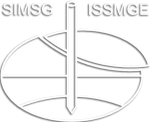End bearing of large diameter piles in sand during driving
End bearing of large diameter piles in sand during driving
Current methods for calibrating the end bearing component of soil resistance to driving (qu) in sand are based on factoring or capping the cone tip resistance (qc). Results of a detailed back analysis of driving behaviour of large diameter piles in sand using a large database of pile driving data from several windfarm sites are presented. Self-weight penetration (SWP) records are assessed indicating qu/qc~0.5. Signal matching for piles in the PAGE JIP indicated unit end bearing <0.2qc. Back analysis of three large windfarm sites revealed qu in the range 0.13-0.25qc with the lower value being more reliable. Differences between SWP and dynamic end bearing are explained in terms of drained and undrained soil resistance. The undrained resistance is much lower than the drained resistance because the operational undrained shear strength is affected by the effective stresses around the pile tip during dynamic penetration which in turn are governed by hydraulic fracture and cavitation.
D. Cathie; Sylvie Raymackers; Thomas Vergote; G. Haine; J. Saraiva; A. Burgraeve
18th European Conference on Soil Mechanics and Geotechnical Engineering (ECSMGE2024)
D - Current and new construction methods
